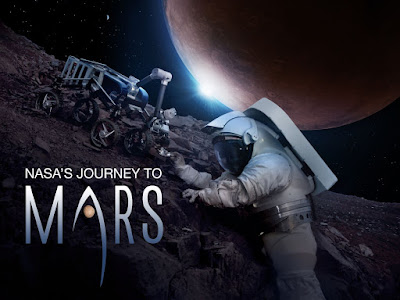China’s Tiangong space station could help pave the way for a manned mission from Mars with its use of a propulsion system.
The space station’s core Tianhe module is powered by four ion drives – also known as Hall effect thrusters – a form of electronic propulsion that has been around for decades and could dramatically slash the time needed to travel to the red planet. The ion drives that power the Tianhe module are small compared to rocket engines but they are incredibly efficient.
The International Space Station (ISS), for instance, consumes over four tonnes of fuel annually to stay in its near-Earth orbit. If powered by ion thrusters, its consumption would drop to 400kg, requiring just one refuelling mission a year, according to the Chinese Academy of Sciences.
With existing rocket technology, a crewed trip to Mars would take more than eight months and would need a spaceship large enough to carry sufficient fuel and other supplies. But some researchers calculate a craft powered by a 200-megawatt (MW) ion drive array could shorten the journey time to just 39 days and allow the mission to use smaller vessels or carry more supplies.
The ion drives produce electronically blue light during its operation. Photo: Nasa
SpaceX, the private firm founded by Elon Musk, plans to fill the sky with tens of thousands of small satellites powered by ion thrusters. Meanwhile, China which has already used it on some of its satellites, plans to use it in a wide range of areas, ranging from extremely precise satellite constellations that can pick up gravitational waves, new-generation commercial and military satellites – and a fast, nuclear-powered spaceship that can take astronauts to Mars.
Most ion thrusters that have been used in space generate around 1 kilowatt in power, but China is planning to make them much bigger as part of its ambitious space programme. For large space missions such as human deep space exploration, the power of the electric propulsion system may exceed 5MW even up to 500MW. Higher power means a shorter transit time, wrote Hang Guanrong and colleagues in the Shanghai Space Station Institute.
Động cơ đẩy hiệu ứng Hall được gọi theo tên Edwin Herbert Hall, nhà vật lý người Mỹ phát hiện các hạt tích điện có thể sản sinh lực đẩy vào thập niên 1930, nhưng các nhà khoa học và kỹ sư Xô Viết là những người đầu tiên đưa công nghệ vào thực tiễn. Họ bắt đầu chế tạo nhiều loại động cơ đẩy Hall dùng cho vệ tinh vào thập niên 1970 và thậm chí bán một số động cơ cho NASA.
Hall effect thrusters are named after Edwin Herbert Hall, an American physicist who discovered in the 1930s that electrically charged particles could produce a thrust, but Soviet scientists and engineers were the first to bring the theory to life. They started making numerous types of Hall thrusters for their satellites in the 1970s and even sold some of these engines to Nasa.
While Nasa also started building its own, the American space authorities treated the ion engine as a sideshow for a number of reasons. The thrust produced by the electric propulsion system was usually quite small. More importantly, charged particles could erode engine components and could shorten the lifespan of satellites and put astronauts in danger.
In China, scientists have been working to improve the technology. The Shanghai Space Station Institute had started ground testing on HET-3000, a 50KW engine which designed mainly for large-scale crewed missions, cargo transport missions to the moon and Mars. When fired up, the ion drive produces bluish fumes and halo rings that are caused by extremely hot, electrically charged particles leaving the engine at 30-plus times the speed of sound.
The Chinese team have been testing the thrusters to the limit to ensure the engines can withstand the damage caused by the particles well enough to be used safely in manned missions. According to the Chinese Academy of Sciences, the ion drive has burned non-stop for 8,240 hours – or more than 11 months – without a glitch, an indicator that they can easily meet the Tiangong space station’s designated 15-year lifespan.
To protect the engine from erosion, researchers put a magnetic field over the engine’s inner wall to repel damaging particles. They have also created a special ceramic material designed to remain stable for a long time in the face of extreme heat or radiation. It took a team of material scientists in Liaoning province decades of research to find a solution.










0 comments:
Post a Comment